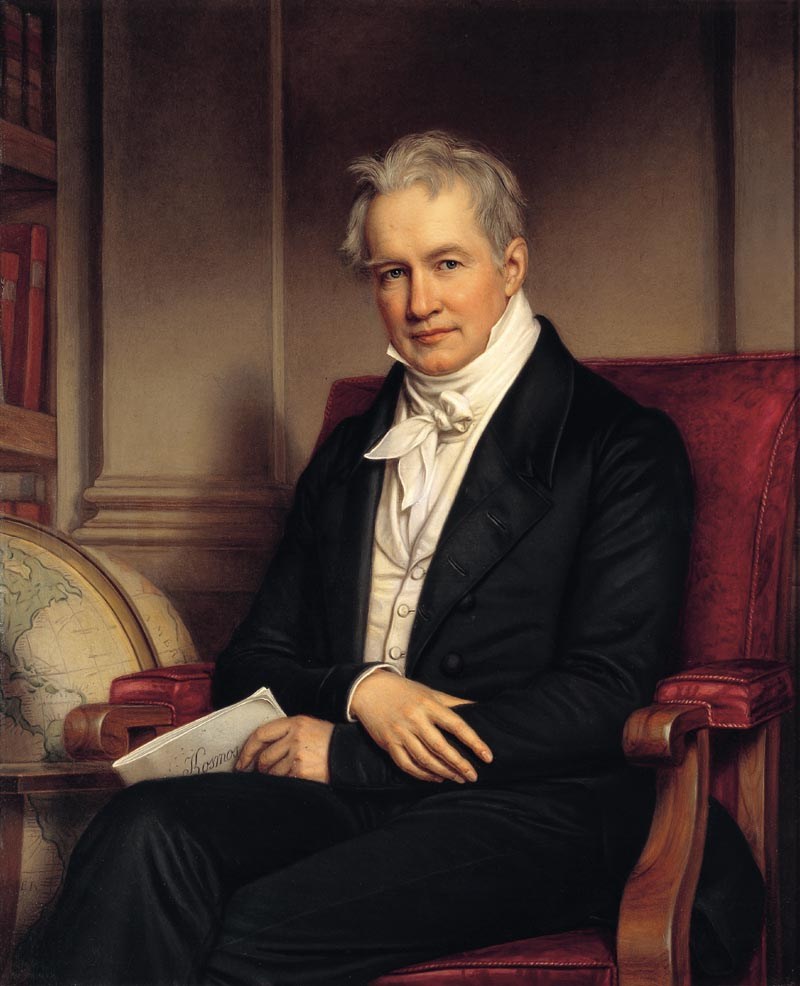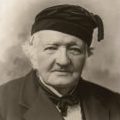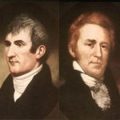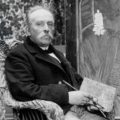Alexander Von Humboldt
Discoverer of Central and South America
On this day in 1859, the naturalist and botanist Alexander Von Humboldt died; he was 89 years old.
In 1806, Friedrich Georg Weitsch painted his portrait; two years after he returned from his five-year research trip through Central and South America. Humboldt didn't go alone; he was accompanied by the French botanist Aimé Bonplant in 1799. Weitsch painted a romantic, idealized vista of Ecuador as the setting for the painting. Humboldt had climbed the Chimborazo Mountain in Ecuador, believed at the time to be the highest mountain in the world, so perhaps Weitsch imaged Humboldt viewing the landscape from Chimborazo.
Surrounded by a jungle paradise, a large palm shades Humboldt's resting spot. In the painting, a very handsome Humboldt is seated on a large boulder, his top hat is resting upside down on the boulder behind him. Weitsch shows the 37-year-old Humboldt wearing a puffy shirt that would make Seinfeld jealous, a pinkish-orange vest, and tan breeches. In his lap, he holds open the large leather-bound Flora he is working on and in his right hand, he has a specimen of "Rhexia seciosa" (aka Meriania speciosa). A large barometer leans against the boulder in the lower-left corner of the painting. It symbolized Humboldt’s principle of measuring environmental data while collecting and describing plants.
King Ferdinand was so pleased with the portrait, that he hung it in the Berlin Palace. that he ordered two more paintings to be made featuring Humboldt's time in the Americas
Humboldt was a polymath; he made contributions across many of the sciences. He made a safety lamp for miners. He discovered the Peru Current (aka the Humboldt Current. He believed South America and Africa had been joined together geographically at one time. He named the "torrid zone"; the area of the earth near the equator. Apropos the area he was exploring, torrid means hot, blistering, scorching. He went to Russia and it was there that he predicted the location of the first Russian diamond deposits.
Humboldt was also a pragmatist. It was the Great Alexandre Von Humboldt who said
"Spend for your table less than you can afford, for your house rent just what you can afford, and for your dress more than you can afford. "
Humboldt developed his own theory for the web of life. "The aims I strive for are an understanding of nature as a whole, proof of the working together of all the species of nature," Humboldt wrote.
"Everything is Interaction," he noted in his Mexican diary in 1803.
This post was featured onThe Daily Gardener podcast:
helping gardeners find their roots,
one story at a time







